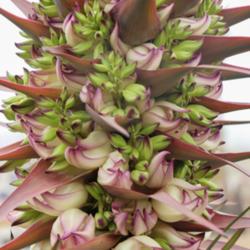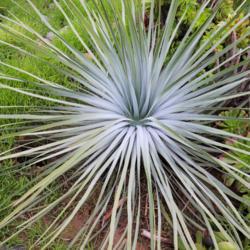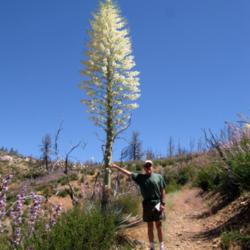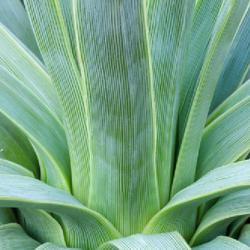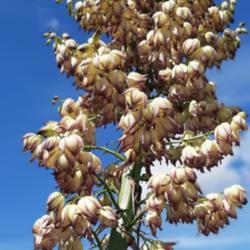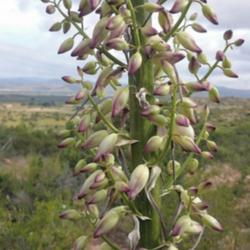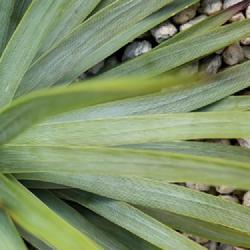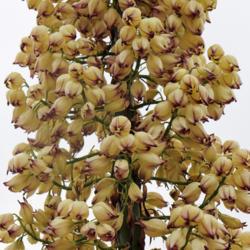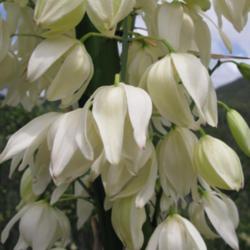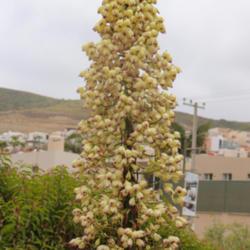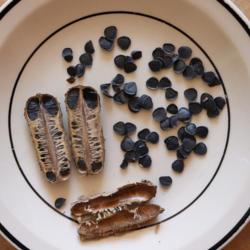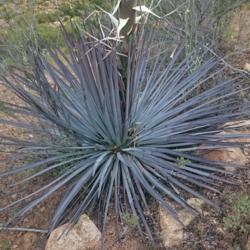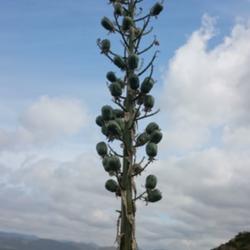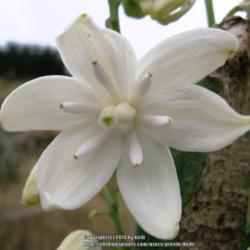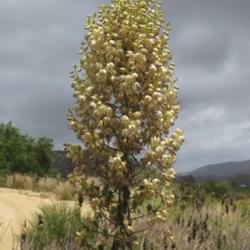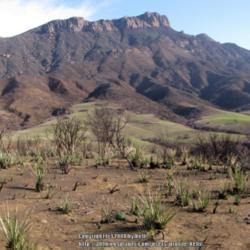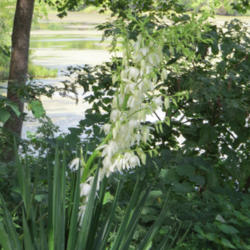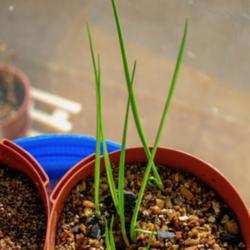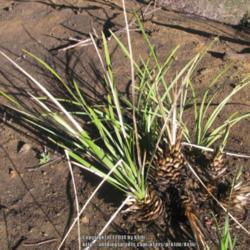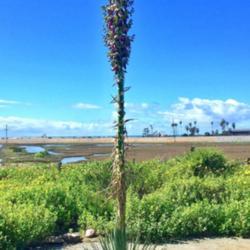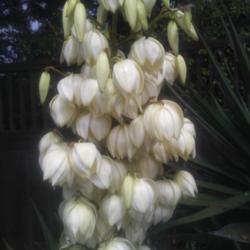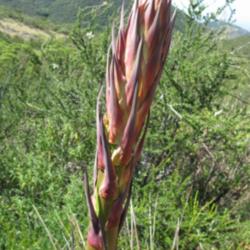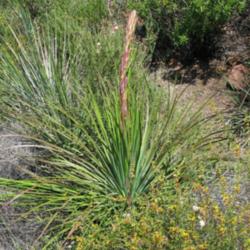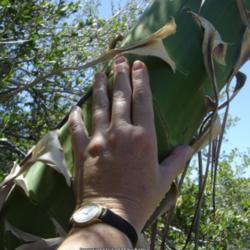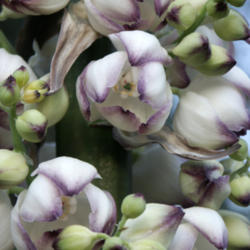Posted by
Baja_Costero (Baja California - Zone 11b) on Apr 26, 2020 5:11 PM concerning plant:
Low rosette succulent with many narrow, blue or blue-green leaves. It makes flowers like a yucca (and is also pollinated by a yucca moth, Tegeticula maculata) but dies after flowering, like an agave. This plant is native to the Californias (and a very small area of Arizona), where it is relatively common. Both solitary and caespitose forms (eg. the former var. caespitosa) exist. The latter tends to have smaller rosettes and may persist in the same location after several rounds of flowering. Plants in habitat may take up to 50 years to bloom, but plants in cultivation may bloom much sooner (after about 10 years).
This plant provides excellent color and symmetry in the garden. Plan for a final size of about 3-4 feet wide (solitary varieties) or more (offsetting varieties). The leaves have sharp tips which are best set back from foot traffic. The inflorescence may grow to 12-13 feet tall and is very striking. Plant in full sun in most locations. This species may tolerate light shade, some temperatures below freezing (down to about 10°F) and desert heat, given some overhead protection. It may do best in winter rainfall climates (like its habitat); it tolerates winter rainfall and summer drought very well.
As a young plant, this species may be confused with a few narrow-leafed yuccas (rigida, rostrata, schottii) and bears a faint resemblance to Dasylirion wheeleri, minus the large teeth. Based on DNA studies it seems to be closely related to Hesperaloe, which produces a similar fruit. The flowers and buds were traditionally used as food.
This plant is easy to grow from seed and relatively quick (2-3 years) to reach landscape size. Green fruit can be collected and allowed to ripen (dry out) in a safe place, at which point it will easily break open to release hundreds of seeds.
This genus apparently evolved a relationship with the yucca moth independently of Yucca species. Its closest genetic relatives (eg. Hesperaloe) are not pollinated by moths.
